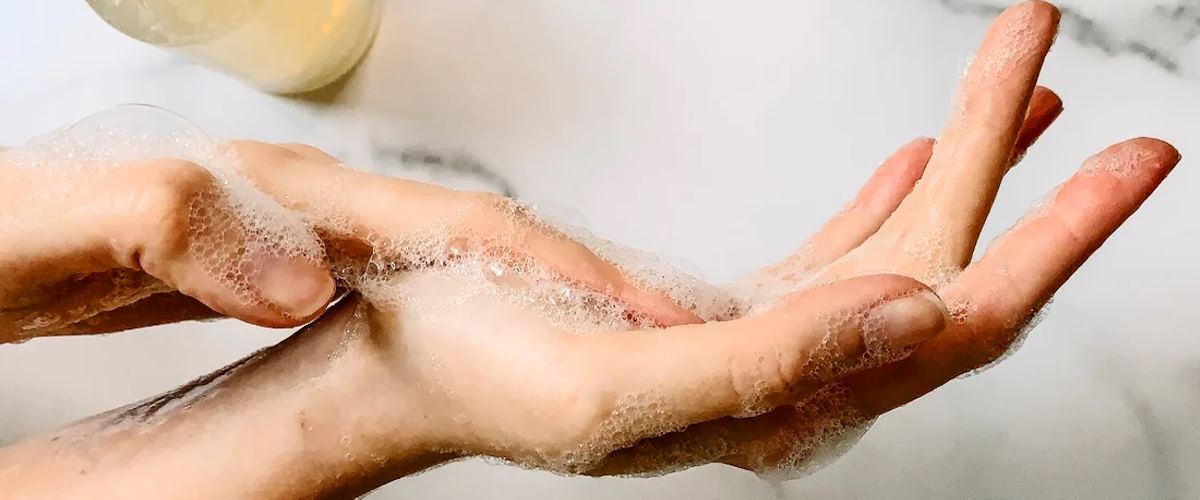How To Treat And Prevent Chapped Hands

Think of your hands as the front line of your body. They face the elements every day—weather changes, harsh soaps, and even the occasional encounter with chemicals. It’s no wonder they can sometimes become chapped and cracked. Just like a dry desert needs a little rain to thrive, our hands need proper care to stay healthy and hydrated. If you’ve been battling chapped hands or just want to know how to keep them in tip-top shape, you’re in the right place!
Understanding Chapped Hands
What Are Chapped Hands?
Chapped hands are essentially dry, cracked skin that often appears red, flaky, and irritated. Think of your skin as a protective barrier—when it gets too dry, that barrier breaks down, leading to discomfort and even pain. If you’re like many people, you may notice this issue more during the winter months when the air is cold and dry.
What Causes Chapped Hands?
Several factors can contribute to chapped hands, and understanding them is the first step to prevention. Here’s a list of common causes:
- Weather Conditions: Cold temperatures and low humidity can sap moisture from your skin, leaving it dry and chapped.
- Frequent Handwashing: While washing your hands is essential for hygiene, doing it too often can strip away natural oils.
- Harsh Chemicals: Cleaning products, detergents, and soaps can contain irritants that dry out your skin.
- Skin Conditions: Conditions like eczema or psoriasis can make your skin more prone to drying out.
| Cause | Description |
| Weather Conditions | Cold, dry air that pulls moisture from the skin |
| Frequent Handwashing | Over-washing can strip natural oils |
| Harsh Chemicals | Irritants in soaps and cleaning products |
| Skin Conditions | Conditions like eczema that lead to extra dryness |
Signs and Symptoms of Chapped Hands
So, how do you know if your hands are chapped? Here are some common signs and symptoms to watch for:
- Dryness and Flakiness: Your hands may feel rough to the touch.
- Redness and Irritation: You might notice your skin looking inflamed or irritated.
- Cracks and Splits: In more severe cases, you could develop painful cracks in your skin.
- Itching or Burning Sensations: Chapped hands can feel uncomfortable, leading to itching or even a burning sensation.
When to Seek Help
If you notice any of these signs, it’s essential to take action quickly. Sometimes, chapped hands can lead to more severe issues, including infections. If you see symptoms that don’t improve or worsen over time, it’s time to consult a healthcare professional.
Treatment for Chapped Hands
Once you recognize chapped hands, the next step is treating them. Here’s how to get started:
Immediate Care Steps
When you first notice dryness, it’s crucial to act fast. Here’s what you should do:
- Gently Cleanse Your Hands: Use a mild soap that won’t strip your skin of its natural oils. Avoid hot water, as it can further dry out your skin.
- Pat Your Hands Dry: Instead of rubbing your hands with a towel, gently pat them dry to avoid irritating the skin.
Moisturizing Techniques
Moisturizing is your best friend when it comes to treating chapped hands. Here are some effective strategies:
- Use Hand Creams and Lotions: Look for products that contain hydrating ingredients like glycerin, shea butter, or hyaluronic acid. These ingredients can help lock in moisture.
- Apply Moisturizers at Key Times:
- After washing your hands
- Before going to bed
- Whenever you feel dryness
Home Remedies
If you prefer natural solutions, several home remedies can help:
- Natural Oils: Coconut oil and olive oil are great options. They penetrate the skin and provide deep hydration.
- Ointments: Petroleum jelly can create a barrier that locks in moisture, making it ideal for overnight use.
When to Seek Medical Advice
If your symptoms persist or you notice signs of infection, such as increased redness, swelling, or pus, it’s essential to seek medical attention.
Preventive Measures
Now that you know how to treat chapped hands, let’s discuss how to prevent them in the first place. After all, prevention is always better than cure!
Daily Hand Care Routine
Creating a consistent hand care routine is crucial. Here are some simple steps you can incorporate:
- Gentle Washing Practices: Use lukewarm water and a mild soap. Avoid antibacterial soaps, which can be drying.
- Regular Moisturizing: Make moisturizing a habit, especially after washing your hands.
Protective Measures
Consider the following protective measures to keep your hands safe from environmental factors:
- Wear Gloves: When going outside in cold weather or when using cleaning products, gloves act as a shield against harsh elements.
- Choose Non-Irritating Soaps: Opt for gentle, fragrance-free soaps to reduce irritation.
Lifestyle Tips
Your lifestyle choices can impact the health of your skin. Here are some tips to consider:
- Stay Hydrated: Drinking enough water helps maintain skin hydration. Aim for at least eight glasses a day.
- Maintain a Healthy Diet: Foods rich in omega-3 fatty acids, like salmon, flaxseeds, and walnuts, can help keep your skin moisturized from the inside out.
Seasonal Preparations
Be proactive about adjusting your hand care routine according to the seasons. Here’s how:
- Winter: Use thicker creams and lotions during the colder months to combat the drying effects of cold air.
- Summer: While the heat may not be as drying, frequent handwashing (especially after being outdoors) is essential. Stay consistent with your moisturizing routine.





